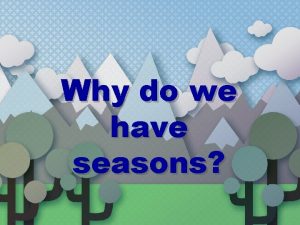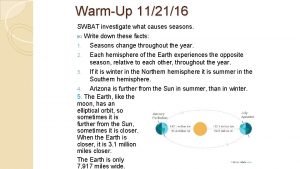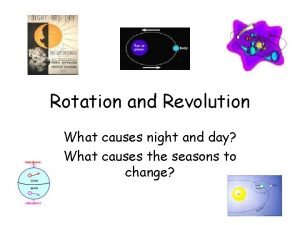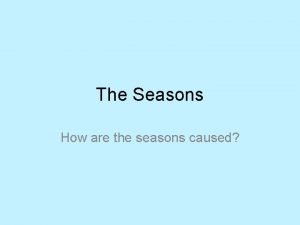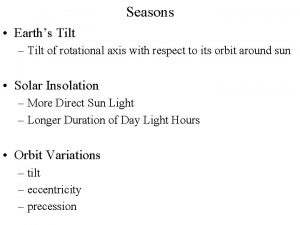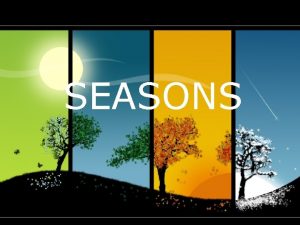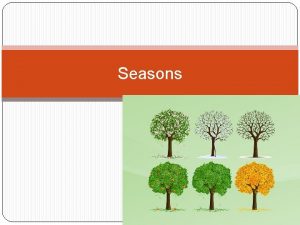What causes the Seasons The tilt of the







- Slides: 7

What causes the Seasons? • The tilt of the Earth’s axis. • The Earth rotates on its axis, but it always points in the same direction. Fall Winter Summer Winter Spring

The Earth’s Magnetic Field Bar Magnet • The field lines defining the structure of the magnetic field are similar to those of a simple bar magnet. Eart h

Origin of the Magnetic Field • Produced by the motion of electrical charges. • Not entirely understood. – Scientist believe it is because of the convective effects of the rotation of the liquid metallic outer core of iron and nickel around the solid iron core of the Earth.

Earth’s Magnetosphere • Solar Wind: Stream of ionized gases that blows outward from the Sun. • The Earth’s magnetic field shields it from much of the solar wind. • Magnetic field protects the Earth with large numbers of high energy (fastmoving) charged particles (protons & electrons).

Differential Heating of the Earth’s Surface • The Earth is unevenly heated on its surface. • This occurs because of the unequal amount of incoming solar radiation or “insolation”

Map of Average Solar Radiation http: //user. gs. rmit. edu. au/caa/global/graphic s/solar. jpg Where is the highest amount of the solar radiation? Near Equator equator Where is the lowest amount of solar radiation? North and Near poles souththe pole How does this relate to climate around the world? Highest amount sunlight. Equatorof = warmer warmest climate weather Poles = cooler climate

Photosynthesis • Plants absorb sunlight (solar energy) and convert it into glucose (food) which is chemical energy. • Chemical energy (food) gives us energy.


